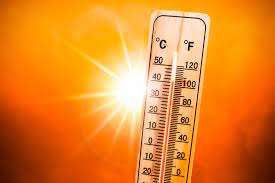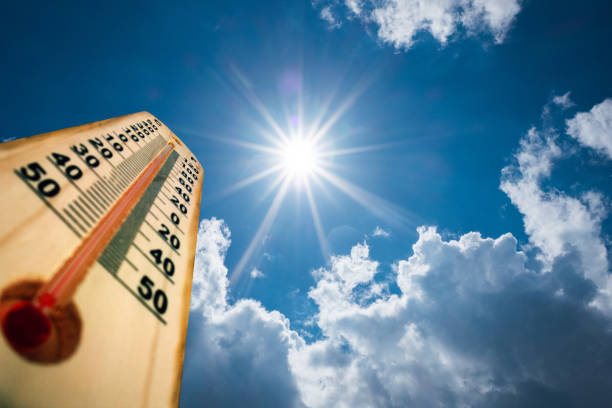
Despite the severe cold spell that swept across the UK in the middle weeks of December, when there were snow, ice and fog warnings almost daily, the Met Office are already saying that 2022 will be the warmest year on record for the country.
Provisional figures show that every month up to December was hotter than the average, meaning that although this month is likely to be below what could normally be expected, the year’s average temperature will beat the previous all-time high of 9.88C, set in 2014.
Additionally, the forecast is for 2023 to be even warmer, possible even the hottest on record, which if it were to prove to be the case, would be the tenth year in a row that temperatures were above the expected average.
First time past 40 degrees Celsius
A spell of successive heatwaves across the UK throughout the summer months resulted in the fourth warmest summer on record, with the real intense spell in the middle of July seeing temperatures break the 40C mark for the very first time and the Met Office issue their first ever red warning for extreme heat.
Forthcoming decades to continue to get warmer unless a solution is found
Senior Climate Change scientist Dr Mark McCarthy, at the Met Office, said the provisional figures are in line with the “genuine impacts we expect as a result of human-induced climate change.” He added that although that does not necessarily mean that every year will continue to beat the previous record, it will inevitably mean the coming decades will become increasingly warmer until a solution is found to halt the rapid temperature changes now being experienced.
2023 likely to be even warmer than this year
The actual warmest year since records began back in 1850 was six years ago in 2016, when meteorologists said the weather phenomenon known as El Niño boosted global temperatures significantly. The past three years have apparently been affected by another weather pattern called La Niña, which occurs when cooler-than-average sea temperatures in the Pacific lower the average global temperature.
However, that natural and temporary breaking effect is now predicted to end, bringing warmer conditions in parts of the Pacific and that will inevitably mean next year will almost certainly be warmer than 2022.
University of Reading professor of climate science, Richard Allen, said: “The full-on gas pedal will invigorate warming over the coming year and continue into the future, along with more severe wet, dry and hot extremes, until policies are in place to achieve net zero greenhouse gas emissions.”
Government promises only good on paper
Scientific evidence shows that climate change is driving up the global temperature, and governments around the world have promised to cut emissions to keep temperature rises below 1.5C; but promises in writing mean little unless the vast majority of the world’s population get on board, and right now that simply is not looking likely.
Benchmark set according to biggest conservation charity in Europe
The UK charity, The National Trust, which is Europe’s largest conservation charity, who operate with a strong aim to preserve historic and natural places, and have been in existence for over 125 years, have also produced a report which predicts that the extreme weather seen throughout this last year has set a benchmark for what a typical year could be like long into the future. It has been a “stark illustration” of the difficulties many UK species could face without more action to tackle climate change.
They say that the high temperatures, droughts, and back-to-back storms will create major challenges for nature in years to come. This year’s hot summer and months of low rainfall dried up rivers, fragile chalk streams and ponds, damaged crops and natural habitats, and fuelled wildfires that destroyed landscapes.
Their climate change adviser, Keith Jones, said there was “no escaping” how challenging this year’s weather had been for nature and predicted that future would see more torrential downpours, along with very dry and hot summers.
Examples of extremes in weather in UK over past 12 months
Some of the biggest extremes to occur in UK weather during 2022 include:
- February’s three successive storms inside a week (Dudley, Eunice and Franklin) the first time that had happened since the naming system had been introduced in 2015.
- Record high temperature of 40.3C for anywhere in the United Kingdom recorded at Coningsby in Lincolnshire on 19 July.
- An official drought declared in huge parts of England during the month of August as water in reservoirs and rivers hit a dangerously low level.
- The recent Autumn was the third warmest on record with the month of November a startling 1.8C above the average.
- The coldest first two weeks of December since 2010 with temperatures dropping as low as -17.3C at Braemar in the Scottish Highlands.





0 Comments